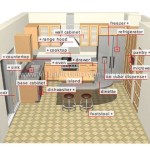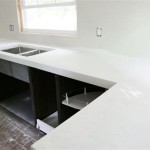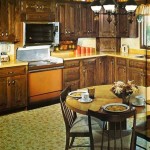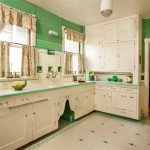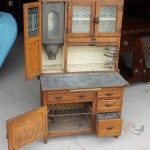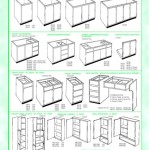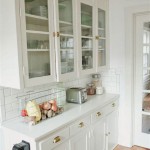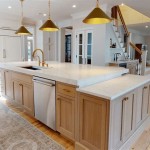Types of Kitchen Cabinet Hinges
Kitchen cabinet hinges, often overlooked, are crucial components that determine the functionality and longevity of cabinet doors. Selecting the appropriate hinge type is vital for optimal performance and aesthetic appeal. Understanding the various types available is the first step in making an informed decision when designing, renovating, or repairing kitchen cabinetry.
The evolution of cabinet hinges has resulted in a diverse range of styles, each designed to meet specific needs and preferences. From traditional face-frame hinges to modern concealed hinges, the market offers options for every design aesthetic and functionality requirement. Considerations such as door overlay, cabinet construction, and desired level of adjustability all play a role in the selection process.
Overlay Styles and Hinge Compatibility
One of the primary factors influencing hinge selection is the overlay style of the cabinet door. Overlay refers to the extent to which the door covers the cabinet frame. There are three main types of overlay: full overlay, half overlay, and inset.
Full Overlay: In a full overlay design, the cabinet doors completely cover the cabinet frame, creating a sleek, modern appearance. Full overlay hinges are designed to allow the door to sit flush with the cabinet frame when closed. These hinges are typically concealed, contributing to the seamless look.
Half Overlay: Half overlay designs feature doors that partially cover the cabinet frame, leaving a portion of the frame visible. Half overlay hinges are specifically designed to accommodate this partial coverage, ensuring that the doors align correctly and function smoothly. Using the wrong hinge type can result in doors that rub against each other or fail to close properly.
Inset: Inset doors are flush with the cabinet frame, creating a traditional, built-in appearance. Inset hinges are designed to allow the door to sit perfectly within the frame opening. This type of installation requires precision and often involves specialized hinges that allow for both vertical and horizontal adjustments.
Types of Cabinet Hinges
The market presents a wide variety of cabinet hinges, each with distinct characteristics and applications. These can be broadly classified into visible (or exposed) and concealed hinges.
Visible Hinges: Visible hinges are mounted on the exterior of the cabinet frame and door, making them a prominent design element. These hinges are often chosen for their decorative appeal and ease of installation.
Butt Hinges: Butt hinges are a classic type of visible hinge, consisting of two rectangular leaves that are mortised into the cabinet frame and door. They are typically used for inset doors and are available in various sizes and finishes. The installation of butt hinges requires precise mortising to ensure proper alignment and function.
Strap Hinges: Strap hinges are characterized by their long, decorative straps that extend across the door surface. These hinges are often used in rustic or traditional kitchen designs and are available in various styles, including those with decorative embellishments. Strap hinges provide a strong and visually appealing option for larger or heavier cabinet doors.
Surface Mount Hinges: Surface mount hinges, as the name suggests, are mounted directly onto the surface of the cabinet frame and door, without requiring mortising. This makes them easier to install than butt hinges. They are often used for retrofitting or repairing existing cabinets.
Concealed Hinges: Concealed hinges, also known as European hinges, are hidden from view when the cabinet door is closed, providing a clean, contemporary look. They are typically used for frameless cabinets but can also be adapted for face-frame cabinets with the use of mounting plates.
Cup Hinges: Cup hinges are a type of concealed hinge that features a cup-shaped recess that is drilled into the cabinet door. The hinge mechanism is then inserted into the cup and attached to the cabinet frame. Cup hinges offer a high degree of adjustability, allowing for precise alignment of the doors. They are available in various opening angles, including 95-degree, 110-degree, and 170-degree options.
Soft-Close Hinges: Soft-close hinges are a variation of concealed hinges that incorporate a damping mechanism to prevent the cabinet door from slamming shut. This feature reduces noise and minimizes wear and tear on the cabinets. Soft-close hinges are increasingly popular in modern kitchens due to their added convenience and durability.
Self-Closing Hinges: Self-closing hinges are designed to automatically pull the cabinet door closed when it is within a certain distance of the cabinet frame. This ensures that the doors are always closed properly, preventing them from being left ajar. Self-closing hinges can be either visible or concealed and are often used in kitchens where convenience and efficiency are prioritized.
Factors to Consider When Choosing Hinges
Selecting the appropriate cabinet hinges involves considering several factors, including the type of cabinet construction, the weight and size of the doors, and the desired aesthetic.
Cabinet Construction: The type of cabinet construction, whether face-frame or frameless, will significantly influence the choice of hinges. Face-frame cabinets have a frame around the cabinet opening, while frameless cabinets do not. Concealed hinges are typically used for frameless cabinets, while both visible and concealed hinges can be used for face-frame cabinets.
Door Weight and Size: The weight and size of the cabinet doors will determine the required strength and durability of the hinges. Larger or heavier doors will require heavier-duty hinges to ensure proper support and prevent sagging. Consult the manufacturer's specifications to determine the appropriate weight capacity for the selected hinges.
Desired Aesthetic: The desired aesthetic of the kitchen will also play a role in the selection of hinges. Visible hinges can add a decorative element to the cabinets, while concealed hinges provide a clean, modern look. Consider the overall design theme of the kitchen when choosing hinges to ensure that they complement the other elements of the space.
Adjustability: The level of adjustability offered by the hinges is another important consideration. Adjustable hinges allow for fine-tuning of the door alignment, ensuring that the doors are perfectly aligned and function smoothly. Cup hinges and other types of concealed hinges typically offer a high degree of adjustability.
Material and Finish: Cabinet hinges are available in a variety of materials and finishes, including steel, stainless steel, brass, and nickel. The choice of material and finish will depend on the desired aesthetic and the overall style of the kitchen. Consider the durability and corrosion resistance of the material when making your selection.
Opening Angle: The opening angle of the hinges will determine how far the cabinet doors can open. Standard hinges typically have an opening angle of 95 to 110 degrees, while specialized hinges may have an opening angle of up to 170 degrees. Consider the layout of the kitchen and the proximity of other cabinets or appliances when selecting the appropriate opening angle.
Installation Requirements: The ease of installation is another factor to consider. Some hinges, such as surface mount hinges, are relatively easy to install, while others, such as butt hinges, require more precise installation. Consider your level of experience and the available tools when choosing hinges. Hiring a professional installer may be necessary for more complex installations.
Durability and Longevity: The durability and longevity of the hinges are important considerations, particularly in high-use kitchens. Choose hinges that are made from high-quality materials and are designed to withstand frequent use. Look for hinges that have been tested for durability and are backed by a warranty.
The selection of appropriate kitchen cabinet hinges requires careful consideration of various factors. By understanding the different types of hinges available and their specific applications, homeowners and designers can ensure that their cabinets function properly and contribute to the overall aesthetic of the kitchen. Proper hinge selection ensures the long-term performance and appearance of kitchen cabinetry. Investing in quality hinges is a worthwhile endeavor that can significantly enhance the functionality and value of any kitchen.

21 Types Of Cabinet Hinges Explained

The Ultimate Guide To Kitchen Cabinet Hinges

Glimpse Through The Various Types Of Hinges For Cabinets Mccoy Mart

Diffe Types Of Hinges Door Window Kitchen Cabinet

5 Common Types Of Cabinet Hinges For Purchasing

Types Of Cabinet Hinges The Home Depot

Here S How Select The Proper Type Of Hinges

Concealed Cabinet Hinges Types Features And Furnica

Liberty Matte Black Self Closing Overlay Cabinet Hinge 5 Pairs H0103bl Fb Sp The Home Depot

The 11 Most Common Types Of Cabinet Hinges

